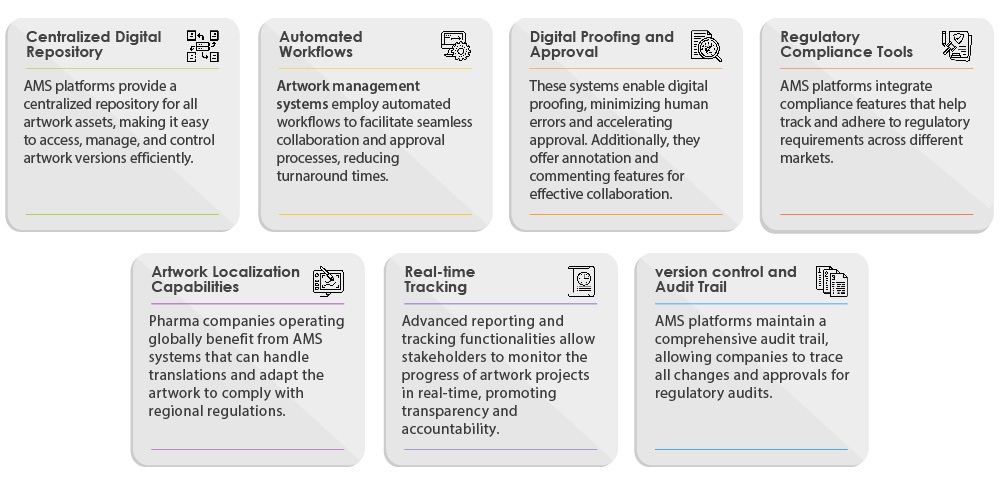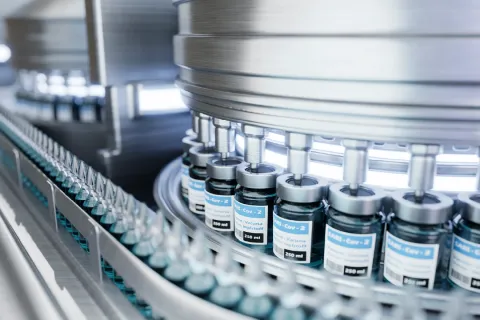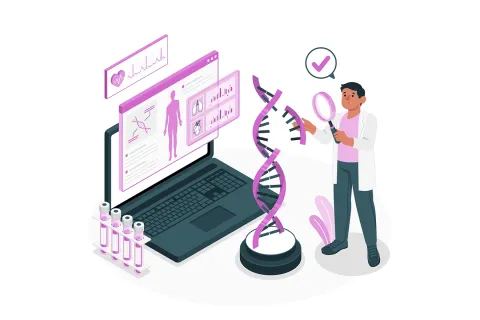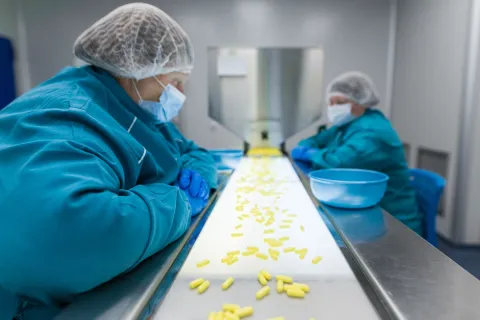
In the highly regulated pharmaceutical industry, the production of medicines and related products requires meticulous attention to detail and compliance with various regulatory guidelines. One critical aspect of pharmaceutical production is creating, approving, and managing artwork, including labels, packaging, and promotional materials. The traditional artwork processes can be time-consuming, error-prone, and resource-intensive. The pharma industry is turning to modern Artwork Management Systems (AMS) to overcome these challenges and achieve greater efficiency and compliance by streamlining the pharmaceutical company’s artwork processes and improving efficiency, accuracy, and compliance.
In this blog article, we will explore the significance of artwork management in the pharmaceutical sector, the challenges faced with traditional approaches, and how modern Artwork Management Systems are revolutionizing the industry by streamlining processes and ensuring seamless compliance.
Importance of Artwork Management in the Pharma Industry
Artwork plays a pivotal role in pharmaceutical products as it communicates essential information to healthcare professionals, patients, and regulatory bodies. Accurate and compliant artwork is crucial for conveying product details, dosage instructions, safety warnings, expiration dates, and barcodes, among other critical information. Effective artwork management is essential for:
- Regulatory Compliance: The pharmaceutical industry operates under strict regulations from agencies like the Food and Drug Administration (FDA) in the US and the European Medicines Agency (EMA) in Europe. Any non-compliance with labeling and packaging regulations can lead to costly delays or even product recalls.
- Brand Identity: Artwork reflects a pharmaceutical company's brand identity, making it imperative to maintain consistency across products and geographies. A cohesive and recognizable brand image instills trust and reliability in consumers.
- Efficiency and Speed: Timely product launches and updates are essential to staying competitive in the market. Streamlining artwork processes helps expedite product launches, reducing time-to-market and enhancing operational efficiency.
Challenges with Traditional Artwork Processes
Historically, pharmaceutical companies relied on manual and disjointed artwork management processes, which led to several challenges, including:
- Version Control Issues: Managing multiple versions of artwork across different product lines and markets was error-prone, leading to confusion and discrepancies.
- Inefficient Collaboration: Coordinating artwork approvals among multiple stakeholders, including regulatory teams, marketing, and design, was a cumbersome task, often leading to delays.
- Error-Prone Proofreading: Manual proofreading processes were susceptible to human errors, such as typographical mistakes or incorrect translations, which could have severe consequences.
- Regulatory Complexity: Keeping up with the evolving regulatory landscape and ensuring compliance with various regional requirements posed significant challenges.
Modern Artwork Management Systems to the Rescue
To address these challenges, the pharma industry is increasingly adopting modern Artwork Management Systems, which leverage technology and automation to streamline the artwork lifecycle. Here are some of the key features and benefits of these systems:

Choosing an Appropriate Artwork Management Systems
When choosing an AMS, there are a few factors that pharmaceutical companies should consider, such as:
- The size of the company: Larger companies will need an AMS that can scale to meet their needs, while smaller companies may be able to get by with a less complex system.
- The company's regulatory requirements: The AMS should be able to meet the specific regulatory requirements of the company's industry.
- The company's budget: The cost of an AMS can vary depending on the features and functionality that are required.
In the pharmaceutical industry, where accuracy, compliance, and efficiency are paramount, adopting modern Artwork Management Systems has become imperative. These systems help streamline artwork processes, reduce lead times, and improve collaboration among stakeholders. By minimizing errors and ensuring regulatory compliance, pharmaceutical companies can enhance their brand reputation, meet market demands more effectively, and bring innovative products to patients promptly.
As the pharma industry continues to evolve, embracing digital transformation through Artwork Management Systems will play a pivotal role in driving growth, ensuring regulatory adherence, and ultimately improving patient outcomes. To align with this evolution an experienced AMS service provider can be of great value. Contact Freyr to learn more about our AMS capabilities.









